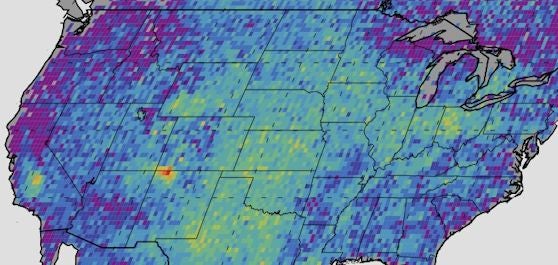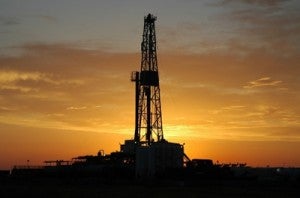Natural gas is reshaping our energy landscape. Though the potential energy security and economic benefits are compelling, the challenge is that natural gas comes with its own set of risks to public health and the environment, including exposure to toxic chemicals and waste products, faulty well construction and design, local and regional air quality issues and land use and community impacts.
There has also been much confusion about the impacts of increased natural gas use on the climate. While natural gas burns cleaner than other fossil fuels when combusted, methane leakage from the production and transportation of natural gas has the potential to remove some or all of those benefits, depending on the leakage rate. Methane is the main ingredient in natural gas and a greenhouse gas (GHG) pollutant many times more potent than carbon dioxide (CO2), the principal contributor to man-made climate change.
Proceedings of the National Academy of Sciences (PNAS) Paper
EDF has teamed up with several respected scientists to find a better way to examine the climatic impacts of increased use of natural gas and compare it in place of other fossil fuels in a paper titled “Greater Focus Needed on Methane Leakage from Natural Gas Infrastructure” published yesterday in the Proceedings of the National Academy of Sciences (PNAS). While methane absorbs more heat energy than CO2, making it a much more potent GHG, it also – luckily – has a shorter duration in the atmosphere. The combination of these factors makes it difficult to compare methane emissions to other GHGs using conventional methods.
Instead, in the PNAS paper, we propose the use of an enhanced scientific method: Technology Warming Potentials (TWPs). Specifically, this approach reveals the inherent climatic trade-offs of different policy and investment choices involving electricity and transportation. It illustrates the importance of accounting for methane leakage across the value chain of natural gas (i.e. production, processing and delivery) when considering fuel-switching scenarios from gasoline, diesel fuel and coal to natural gas. TWPs allow researchers, policy makers and business leaders to make fuel and technology choices while better accounting for their climate impacts.
PNAS Paper Key Findings
We illustrated the new approach by analyzing commonly discussed policy options. Using the Environmental Protection Agency’s (EPA) best available estimated leakage rate of 2.1% of gas produced (through long-distance transmission pipelines but excluding local distribution pipelines), generating electricity from natural gas in new combined cycle power plants decreases our contribution to climate change, compared to new coal-fired plants. This is true as long as methane leakage rates stay under 3.2%.
Natural gas powered cars, in contrast, do not reduce climate impacts unless leakage rates are reduced to 1.6% (compared to our estimate of current “well-to-wheels” leakage of 3.0%). In heavy trucks, the reduction would need to be even more pronounced—converting a fleet of heavy duty trucks to natural gas damages the climate unless leakage is reduced below 1.0%.
The PNAS paper only provides illustrative calculations with EPA’s current estimate of the methane leakage rate and better data is needed to more accurately determine leak rates. Measuring how much gas is lost to the atmosphere and where the leaks are occurring will help to further target leak reduction opportunities to ensure that natural gas will help mitigate climate change. EDF is working to obtain extensive empirical data on methane released to the atmosphere across the natural gas supply chain, since the climatic bottom line of fuel switching scenarios involving natural gas is very sensitive to this parameter.
Not only is the data on methane leakage far from definitive, but climate impacts from leakage – and other key public health and environmental risks – could be reduced by strong standards and improved industry practices. There are many practices and technologies already being used in states such as Colorado and Wyoming, and elsewhere by natural gas companies to reduce gas losses, which results in greater recovery and sale of natural gas, and thus increased economic gains. The return on the initial investment for many of these practices is sometimes as short as a few months and almost always less than two years. In these tough economic times, it would seem wise to eliminate waste, save money and reduce environmental impact.
In sum, the paper’s results suggest that methane leakage rates matter: they can materially affect the relative climate impacts of natural gas over coal and oil. While the paper does not draw hard and fast conclusions about the future implications of fuel switching, it does provide guidance in terms of the leak rates necessary for fuel switching to produce climate benefits at all points in time.
EDF Methane Leakage Model
We also released a new methane leakage model, based on the science described in the PNAS paper, which allows anyone to test a range of scenarios to quantify the climate benefits, or damages, of natural gas production and usage given specific methane leakage rates. Users can vary the key system attributes independently to see how they affect net radiative forcing (the primary index used to quantify the effect of greenhouse gases [GHGs] on global temperatures) from U.S. emissions over time. Visit http://www.edf.org/methaneleakage to plug in different variables and observe the outcome.
For more information, visit http://www.edf.org/methaneleakage.
 This post was updated on February 10th.
This post was updated on February 10th.












 Update: Please note that the EPA is now due to finalize the national emission standards for oil and gas activities by Tuesday, April 17.
Update: Please note that the EPA is now due to finalize the national emission standards for oil and gas activities by Tuesday, April 17.